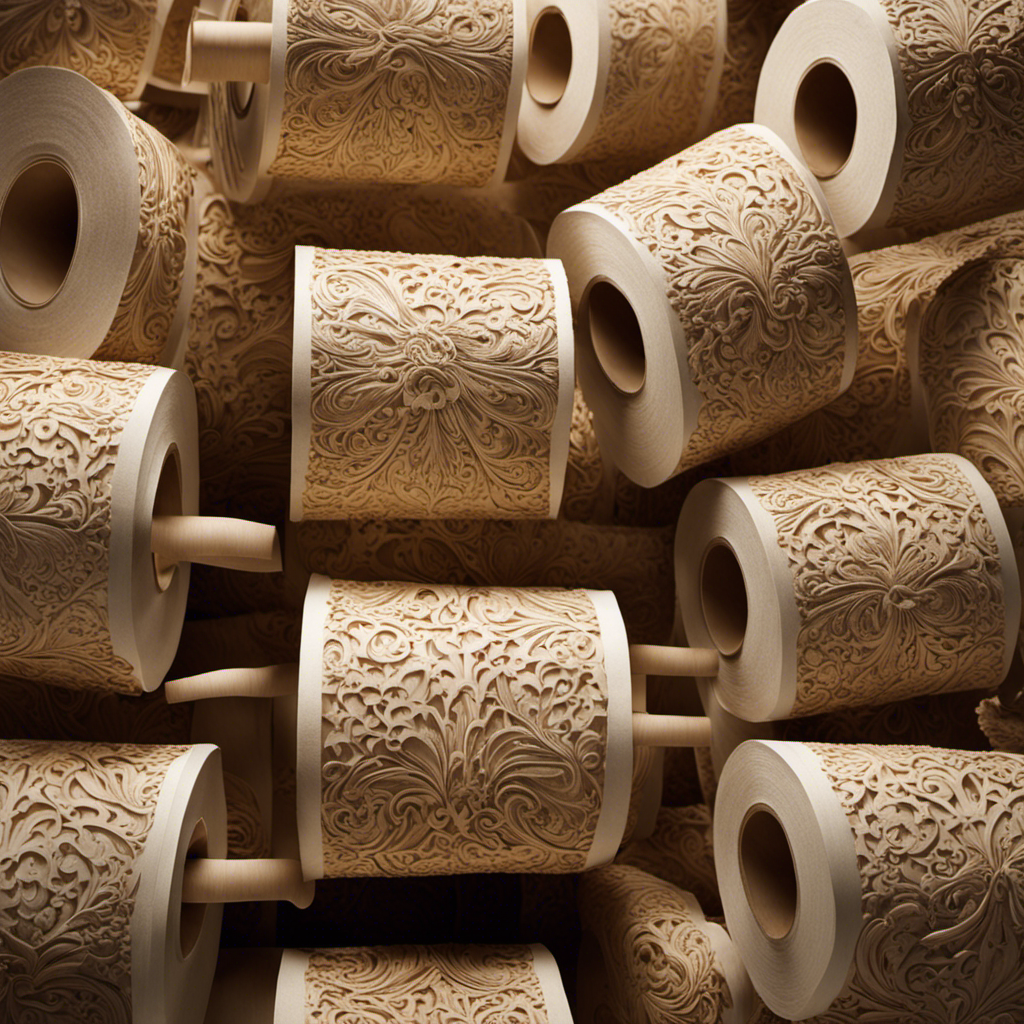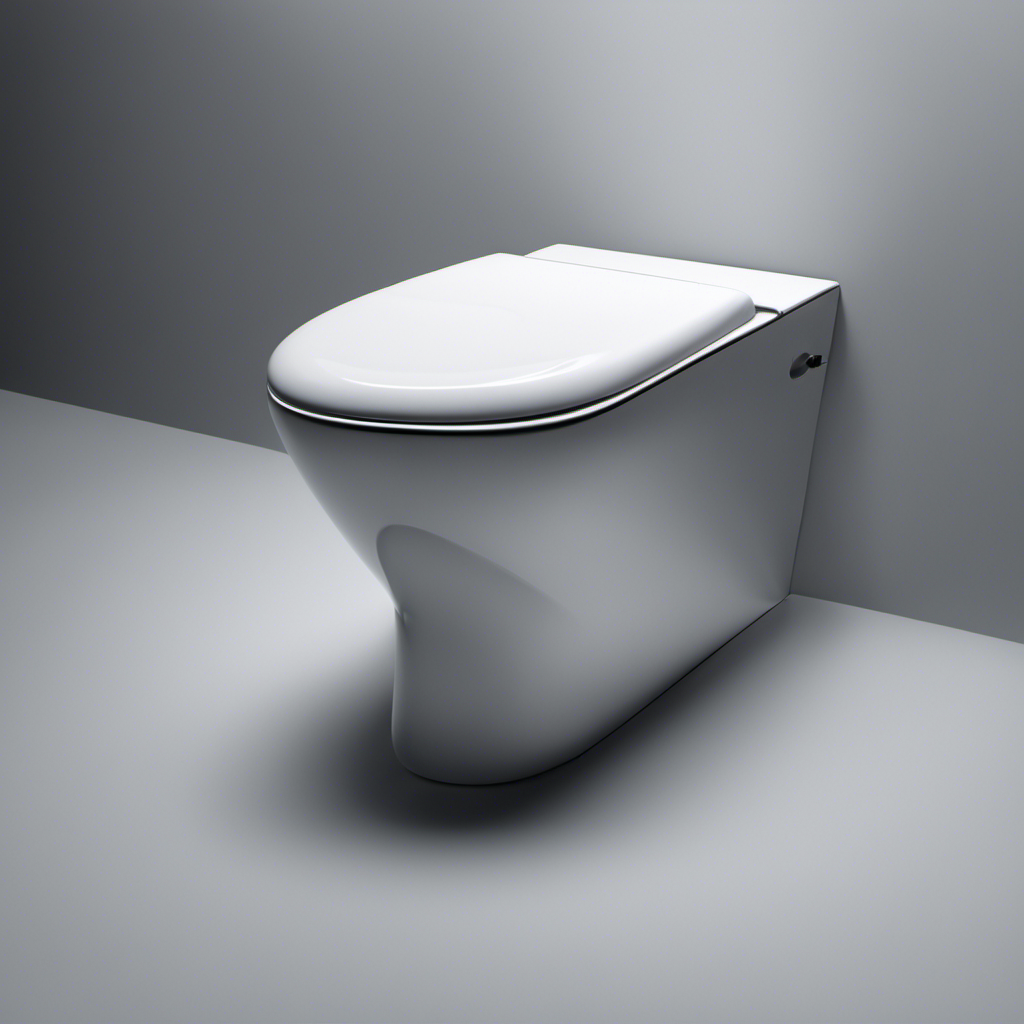Have you ever wondered what toilet paper is made out of? Well, prepare to be surprised.
In this article, I will take you on a journey through the history, materials, and environmental impact of toilet paper production.
Get ready to delve into the fascinating world of toilet paper manufacturing, as we explore the natural and synthetic materials used, and uncover the innovative trends shaping the future of this essential product.
Get ready to flush out the truth!
Key Takeaways
- Toilet paper is primarily made from virgin or recycled wood pulp, bamboo, sugarcane, and eucalyptus.
- Natural materials like bamboo and recycled fibers are popular alternatives to traditional wood pulp in toilet paper production due to sustainability practices.
- Some toilet papers contain synthetic materials like plastic fibers, which do not easily biodegrade and contribute to pollution.
- The toilet paper industry is under pressure to reduce its environmental footprint through the use of recycled paper fibers, responsible sourcing of materials, water and energy conservation, and the adoption of advanced manufacturing techniques.
The History of Toilet Paper
Toilet paper’s history can be traced back to ancient China, where it was first made from bamboo. Over time, different materials were used to make toilet paper, such as rice straw, hemp, and even wool.
In the 19th century, the first commercially-produced toilet paper brands emerged, using a combination of wood pulp and recycled paper. Today, most toilet paper is made from virgin or recycled wood pulp, as well as other materials like bamboo, sugarcane, and even eucalyptus. These materials are processed in large factories, where they are transformed into thin, soft, and absorbent sheets that we use for personal hygiene.
While toilet paper is the most common choice for personal hygiene, there are also alternatives available, such as bidets, wet wipes, and even washable cloth wipes.
Natural Materials Used in Toilet Paper Production
You can easily find toilet paper made from natural materials like bamboo or recycled fibers. These eco-friendly alternatives are becoming increasingly popular due to their sustainability practices. Here are three key points to consider:
-
Bamboo: Toilet paper made from bamboo is a great option as it is a renewable resource that grows quickly and requires minimal water and pesticides. It is also known for its softness and strength, making it an excellent choice for a comfortable bathroom experience.
-
Recycled Fibers: Toilet paper made from recycled fibers helps reduce the demand for virgin wood pulp, conserving forests and natural resources. It is typically made from post-consumer waste paper, such as office paper or newspapers, that is processed to remove inks and contaminants before being turned into toilet paper.
-
Chlorine-free bleaching: Look for toilet paper that is chlorine-free bleached or uses alternative bleaching methods. This reduces the release of harmful chemicals into the environment and helps protect water quality.
Synthetic Materials Used in Toilet Paper Production
When it comes to eco-friendly alternatives, bamboo and recycled fibers are often used in the production of toilet paper. However, there are also synthetic materials, such as plastic fibers, that are used in some toilet papers.
These plastic fibers, commonly made from polypropylene or polyester, are added to increase the strength and softness of the toilet paper. While they can improve the performance of the product, there are sustainability concerns associated with their use. Plastic fibers do not biodegrade easily and can contribute to environmental pollution. Additionally, their production requires the use of fossil fuels, further contributing to carbon emissions.
As consumers become more aware of these issues, there is a growing demand for toilet papers that are free from synthetic materials and prioritize environmental sustainability.
Environmental Impact of Toilet Paper Production
There’s a growing concern over the environmental impact of toilet paper production. As consumers become more aware of the need for sustainable practices, the toilet paper industry is being pressured to adopt initiatives that reduce its environmental footprint.
Some of these sustainability initiatives in toilet paper production include:
-
Using recycled materials: Many companies are now using recycled paper fibers in their toilet paper production, reducing the demand for virgin wood pulp.
-
Sustainable sourcing: Some toilet paper manufacturers are committed to sourcing their materials from responsibly managed forests, ensuring the long-term health of the ecosystem.
-
Water and energy conservation: Implementing efficient manufacturing processes and reducing water and energy consumption are crucial steps in reducing the environmental impact of toilet paper production.
In addition to these initiatives, there are alternatives to traditional toilet paper that can further reduce the environmental impact, such as bidets and bamboo toilet paper. These alternatives offer sustainable options that minimize waste and resource consumption.
As the demand for eco-friendly products continues to rise, innovations and future trends in toilet paper manufacturing aim to further improve the industry’s sustainability practices.
Innovations and Future Trends in Toilet Paper Manufacturing
One way to improve the sustainability of toilet paper production is through the development of alternative materials like bamboo. Bamboo is a fast-growing plant that can be harvested in just a few years, making it a more sustainable option compared to traditional wood pulp. In addition to its sustainability, bamboo also has natural antimicrobial properties, which can help reduce the need for chemical additives in toilet paper production. Furthermore, advanced manufacturing techniques such as energy-efficient processes and closed-loop systems can further enhance the sustainability of toilet paper production. These techniques can help minimize waste, reduce water consumption, and decrease the carbon footprint of the manufacturing process. By combining alternative materials like bamboo with advanced manufacturing techniques, we can make significant strides towards producing more sustainable toilet paper.
| Advantages of Bamboo Toilet Paper | Challenges of Bamboo Toilet Paper |
|---|---|
| Renewable resource | Limited availability |
| Fast growth rate | Relatively higher cost |
| Natural antimicrobial properties | Limited consumer awareness |
| Reduced need for chemical additives | Potential for monoculture farming |
| Potential for carbon sequestration | Lack of standardized certification |
Conclusion
After delving into the fascinating world of toilet paper production, it is clear that this everyday item is anything but ordinary.
From its humble beginnings in ancient China to the vast array of materials used today, toilet paper has evolved into a marvel of innovation and sustainability.
The environmental impact of its production cannot be ignored, but with ongoing advancements and future trends, we can hope for a brighter, greener future in the realm of toilet paper manufacturing.
So next time you reach for that roll, remember the intricate journey it took to reach your bathroom.










